All About Roses: Your Guide to Choosing Beautiful Roses!
Almost everyone loves roses, but many people don’t grow them because they think roses are difficult to care for. Not so. They do require some care, but new disease resistant varieties are much easier to care for than the roses our grandparents grew. Here are some basic tips for growing this “Queen of the Garden”.
LIGHT REQUIREMENTS: Roses perform best in bright sunny areas. Choose a location where access for pruning and maintenance is easy and where the plant is not likely to be exposed to too much overhead watering, (such as lawn sprinklers) which could result in continual fungal problems.
PLANTING: Once you have chosen a location, plant your rose carefully to ensure a healthy start. Use a quality soil mix to blend 50/50 with your existing soil. Dig a hole 1.5 times as big as the container size you are planting. Use your soil blend in the bottom of the hole and handle the root ball carefully, using two hands to place it inside the hole. Next, using your soil blend, fill in around the sides of the root ball, water the root ball thoroughly and let the soil settle naturally. Remember to water daily as the rose gets established. You can begin fertilizing in 2-3 weeks. Once the first blooms fade, what is your next step? Deadhead, water, fertilize and mulch. Pretty darn simple.
DEADHEADING: Deadheading encourages your rose to grow more secondary canes that will give you the next bloom cycle. So, unless you like to grow rose hips, then cut off the blooms. Make your cuts just above (1/4 “) an outward facing 5-leaflet. How far down the cane? That is your choice. During the bud/bloom time, cut some long stems to take into the house. Cut back others to shape and maintain a certain size to the bush throughout the season. Cut off cross canes or any canes coming up below the graft union (those are suckers from the root stock).
WATERING: Roses love water. Keep the soil moist but not with standing water.
FERTILIZING: Roses love to eat, wouldn’t you, after working on all those blooms! Just a quick product note: If you use a systemic food with pesticides, it will kill not just the rose pests but beneficial insects as well.
MULCH: Cover the soil with 2-3 inches of Marcum’s (coca mulch, small or shredded bark) surrounding the rose bush. Keep mulch away from the main stem/graft area. Mulch will keep weeds down, moisture in the soil, and increase the health of your soil.
We look forward to strolling with you through the rose section of our garden center and helping you with the best selection of roses for your garden.

If you’ve ever received (or given) a dozen long-stemmed roses, chances are they were from a hybrid tea rose shrub. Hybrid tea roses have strong, sturdy stems supporting a large, well-formed bloom. Typically, the hybrid tea rose bloom is a single bloom atop a long, sturdy stem. Due to their long, sturdy stems with large, well-formed blooms, hybrid tea roses are sought after by florists worldwide.
Read more about hybrid tea roses, including the meaning of rose bloom colors, at Gardening Know How.

Photo: Marcum’s Nursery

Photo: Marcum’s Nursery

Photo: Weeks Roses

Photo: Marcum’s Nursery

Photo: Marcum’s Nursery

Photo: Weeks Roses

Photo: Marcum’s Nursery

Photo: Marcum’s Nursery


Photo: Marcum’s Nursery

Photo: Marcum’s Nursery

Photo: Marcum’s Nursery
Heavenly Scented

Photo: Marcum’s Nursery

Photo: Marcum’s Nursery


Photo: Marcum’s Nursery
Love at First Sight™

Photo: Marcum’s Nursery

Photo: Marcum’s Nursery

Photo: Marcum’s Nursery
Perfume Factory™

Photo: Marcum’s Nursery
Picture Perfect

Photo: Marcum’s Nursery

Photo: Marcum’s Nursery

Photo: Marcum’s Nursery

Photo: Marcum’s Nursery


Photo: Marcum’s Nursery
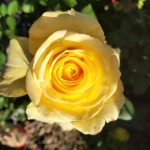
Photo: Marcum’s Nursery


Photo: Marcum’s Nursery

Photo: Marcum’s Nursery


Photo: Marcum’s Nursery
Breeders crossed profusely blooming polyantha roses with elegant hybrid tea roses to produce floribunda roses. These shrubs are smaller and bushier than hybrid tea roses, and they are less
In appearance, floribunda roses are relatively stiff shrubs; they’re smaller and bushier than most hybrid tea roses but less sprawling than polyantha shrub roses. While the flowers are smaller than those of hybrid tea roses, they appear in large sprays that give a very dramatic visual effect in the garden.

Photo: Marcum’s Nursery
Burst of Joy™

Photo: Marcum’s Nursery

Photo: Marcum’s Nursery

Photo: Marcum’s Nursery

Photo: Marcum’s Nursery

Photo: Marcum’s Nursery

Photo: Marcum’s Nursery

Photo: Marcum’s Nursery

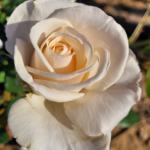
Photo: Marcum’s Nursery

Photo: Marcum’s Nursery

Photo: Marcum’s Nursery

Photo: Marcum’s Nursery

Photo: Marcum’s Nursery
Gingersnap

Photo: Marcum’s Nursery

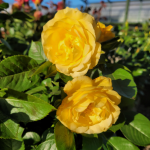
Photo: Marcum’s Nursery


Photo: Marcum’s Nursery

Photo: Marcum’s Nursery

Photo: Marcum’s Nursery


Queen of Elegance™

Photo: Marcum’s Nursery

Photo: Marcum’s Nursery


Photo: Marcum’s Nursery

Photo: Marcum’s Nursery

Photo: Marcum’s Nursery

Photo: Marcum’s Nursery

Photo: Marcum’s Nursery

Grandiflora roses are relatively new hybrids resulting from the crossbreeding of hybrid teas and floribunda roses. The grandiflora takes after its parent flowers in two main ways:
- Like the floribunda, it has the unique ability to produce blooms in multiple clusters.
- Like the hybrid tea, it produces extra large, attention-grabbing flowers.
Use in the garden as a tall specimen rose, middle to back border accent, or in a cutting garden.

Photo: Marcum’s Nursery

Photo: Marcum’s Nursery



Photo: Marcum’s Nursery


Photo: Marcum’s Nursery

Photo: Marcum’s Nursery

Photo: Marcum’s Nursery
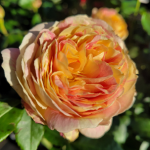
Photo: Marcum’s Nursery
Pop Art


Photo: Marcum’s Nursery

Photo: Marcum’s Nursery
State of Grace™

Photo: Marcum’s Nursery

Photo: Marcum’s Nursery

Photo: Marcum’s Nursery
Uptown Girl®

Golden Opportunity™
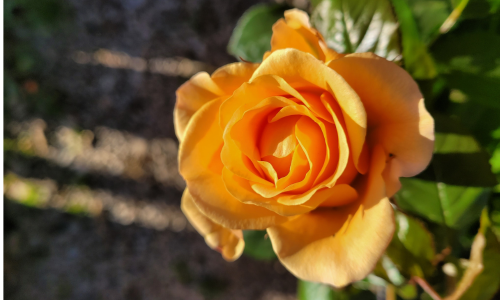
Climbing roses are perhaps better defined as very tall roses with really long canes. Climbing roses need to be tied to an arbor, trellis, or some other structure, but the extra effort can transform the look of a garden.
Check out this video from Heirloom Roses to learn more about securing climbing roses: Planting & Training Your Climbing Rose


Cécile Brünner

Photo: Marcum’s Nursery




Photo: Marcum’s Nursery

Photo: Marcum’s Nursery


Photo: Marcum’s Nursery
Zéphirine Drouhin
Related Products:

Rose & Flower Food with Systemic Insecticide
Back to Home